Sami Niemelä
Creative Director, Innovation Coach

Creative Director, Innovation Coach
I recently had the privilege to participate at Gather Festival Stockholm for a session about the role of artificial intelligence in creativity and creative fields.This what I talked about:
In 2009, the city of Berlin in Germany set up a competition to find new, inventive uses for Templehof airport which had just ceased operations in preparations for the new, upcoming Brandenburg airport. German architect Jakob Tigges had an idea. Since the city of Berlin is mostly flatlands at the banks of river Spree, they dreamed of something that was missing. They came up with an ambitious plan to build a new visionary landmark, in something Berlin had been missing so far: a mountain.
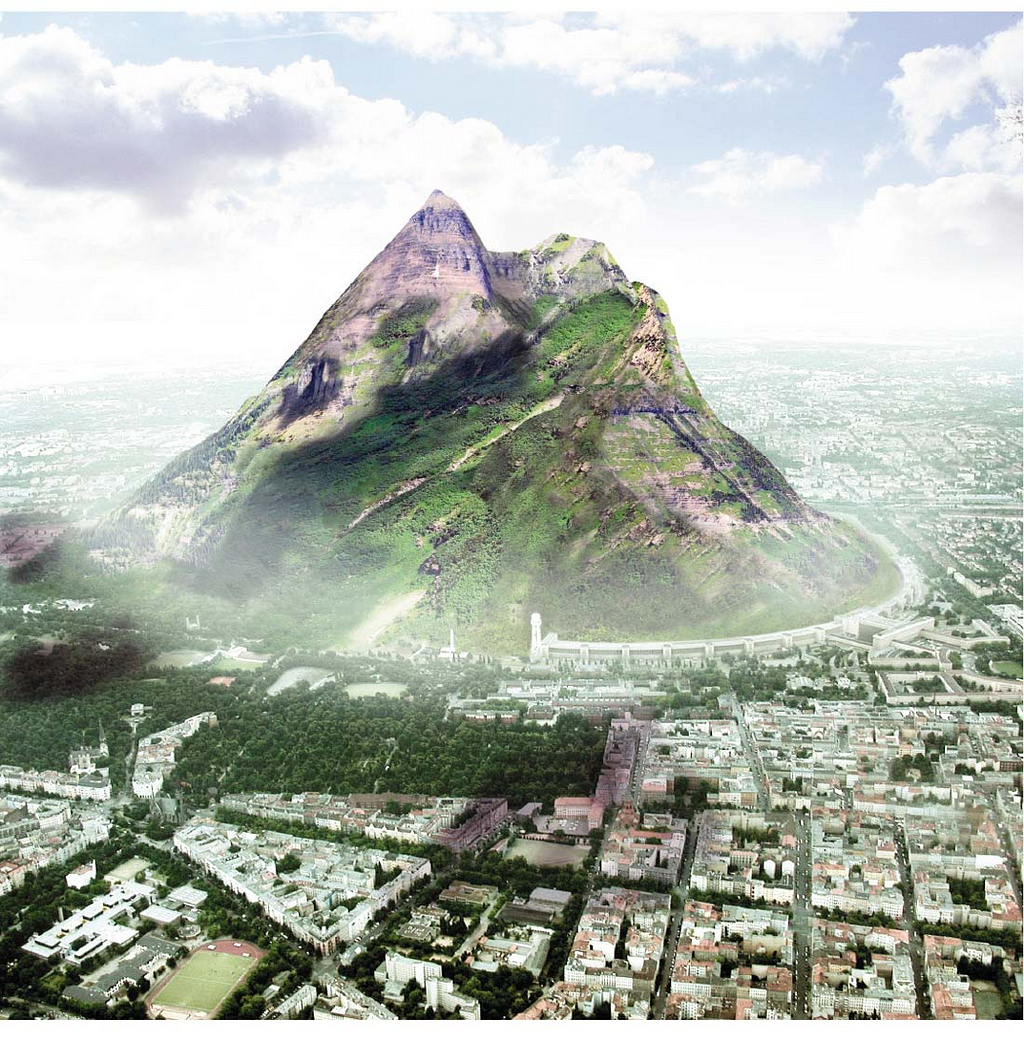
Of course, they proposed very articulate plans to build a mountain of 1,000 meters high called “The Berg”, which would become a never-before-seen tourist destination in the German capital city.

The plan they submitted, felt very realistic and had articulate renderings and plans included. Goats were gracing the mountainside pastures while Berlin’s beloved Fernsehturm watched from afar. Speculations on new climate models the Berg would bring, and what kind of plants and animals would be gracing the slopes of the Berg and at different altitudes. Obviously, the north-facing side also included plans for a ski slope, with a cable car taking visitors to higher elevations.

For some reason, the plan wasn’t selected, and thus never realised. Probably because building a mountain on an abandoned airport would not have been that simple after all. Nevertheless, the whole story became part of the local spirit where crazy plans are a sign of lateral thinking where little is impossible. If you visit certain Mitte bars today, you might still see the Berg poster gracing their walls as an inspiration.

For the sake of building the story and the argument in this post, let’s agree this is something we’d call a real fake. It is an execution of something we know isn’t going to materialise. Perhaps even made bit of a tongue-in-cheek but it is crucial to visualise nevertheless, and for reasons that may vary.

Near Future Laboratory is a thinking, making, design, development and research practice based in California and Europe. A few years ago they teamed up with Mobile Life Center in Stockholm and Boris to design and “Ikea catalogue from the near future”. Their intention was to encourage conversations about the kinds of near futures we’d prefer by making them visible, and visual.
The result was a brilliantly designed, real looking but fictional Ikea catalogue from the near future. In this future, you could pay to use your kitchen module by the hour, and purchase kitchen top with an embedded AI to help with your cooking activities, and much more.
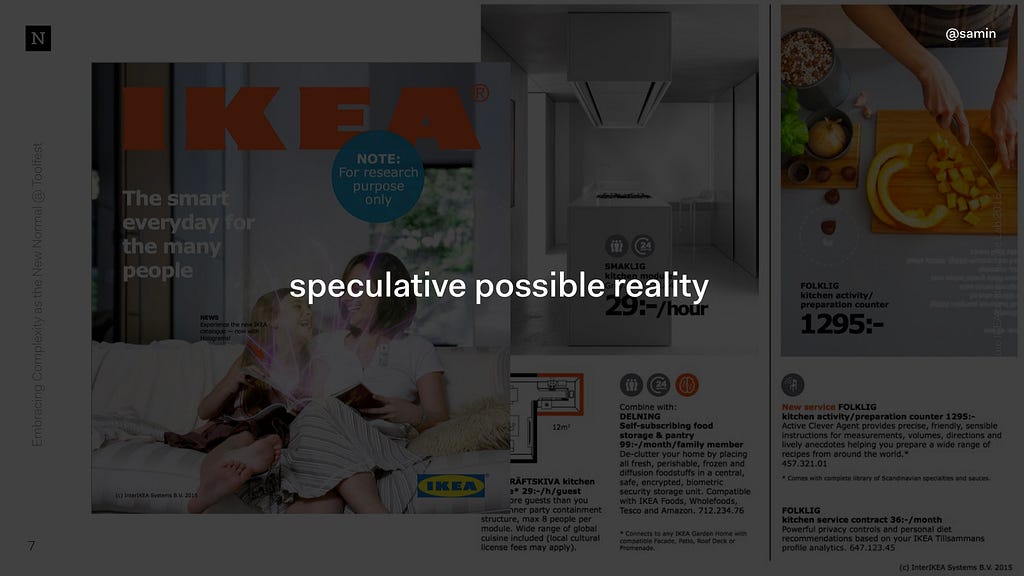
In the context of this post, let’s call this a speculative possible reality. Something we can speculate, anticipate and approximate to a degree of certainty through weak signals, trend drivers and technology present in the world we live in already.
Then, there’s science fiction which at least on the surface is familiar to most of us. Stories of possible futures that are deeply rooted in the age they were written in, and to a degree reflect the optimism, fear and general sentiment present at the time of writing.
For example, one angle to look at Stanley Kubrick’s Space Odyssey 2001 and it’s agentive technology / ASI, HAL, as one man’s vision and criticism of the increasing speed of technological development.
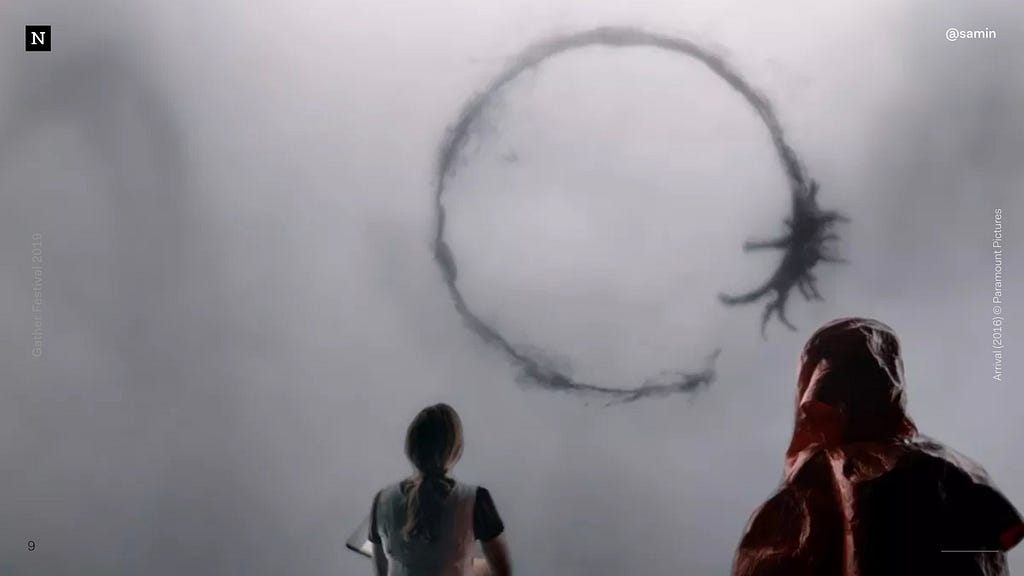
Movies like Arrival deal heavily with the rise of xenophobia, foreign languages and the fear of unknown very much present in our time now. Other examples, such as Amazon Prime’s The Expanse project us a deep universe with a network of intergalactic relations and tribes wounded by their collective history. Not unlike the world we live in right now.
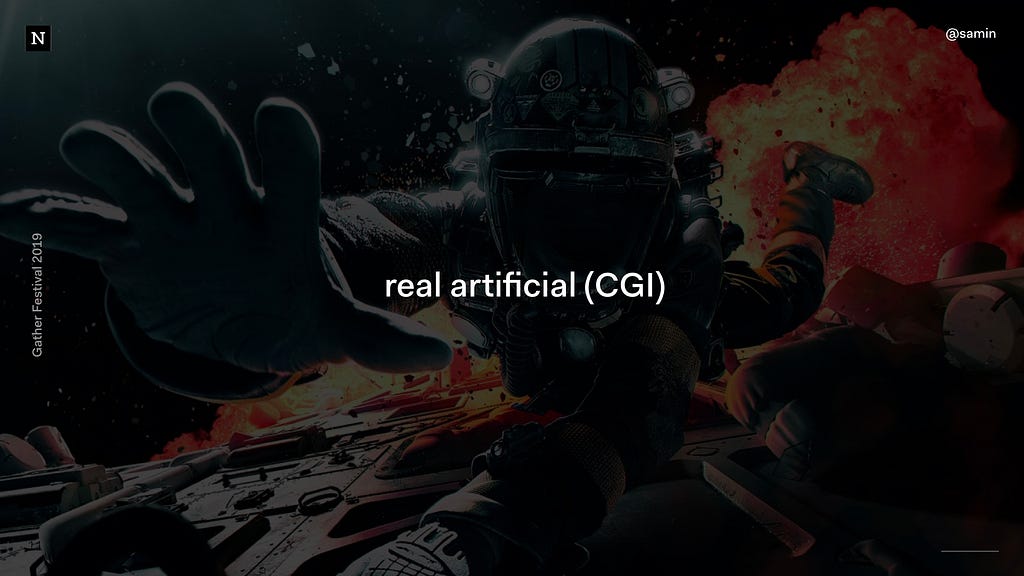
For us, this is real artificial. Something that looks real for us, and especially in the context of storytelling and world-building is real enough for us to sink ourselves into the fictional narrative itself.

Sometimes, the science fictions and artificial reals are real enough to also work towards the real world. Technology around us, and the interfaces we use are increasingly catching up with science fiction, which in turn can be inspired by real instruments in our reality . Take the precision instruments from fighter jets, for example, inspiring Gmunk’s work for Oblivion, or the vehicle interfaces from the original Blade Runner set in 2020 slowly coming reality at unexpected ways years before in electric vehicles.
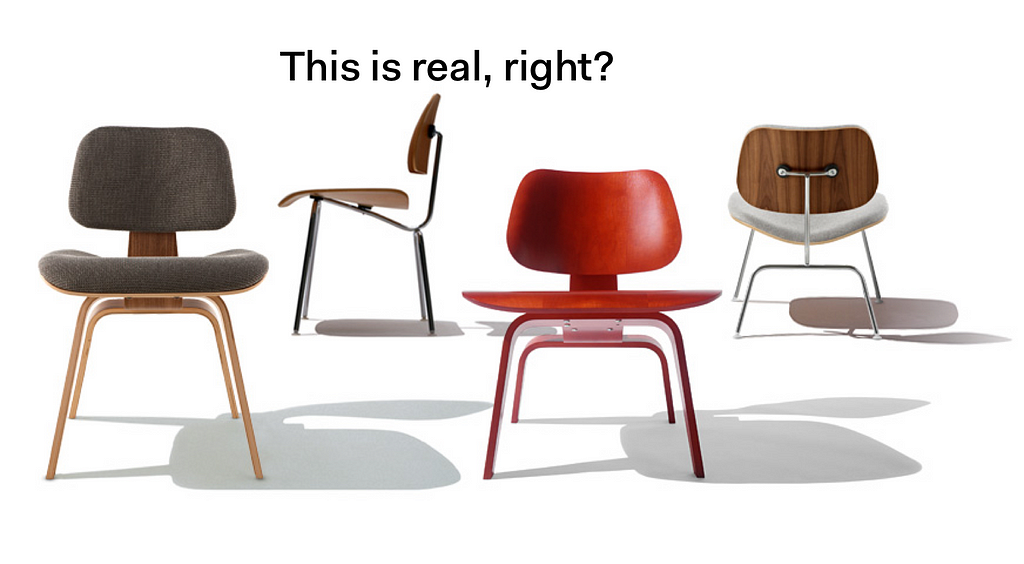
So what is real?
Going back to the design, and especially what we in the west currently think as real. By definition, original design very often leads back to physical materials and results of industrial design and manufacturing. For example, for many of us, the furniture Charles and Ray Eames designed in their mid-century studio in Venice stand at the very definition of “real design”. Interestingly enough, they also subscribed in the philosophy of learning by doing.
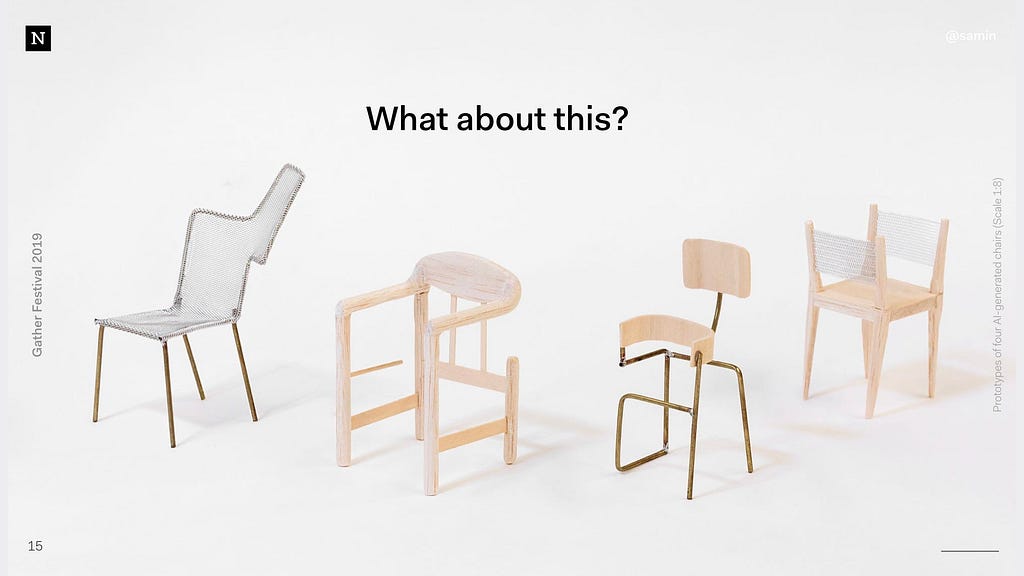
More recently, the Chair Project by Philipp Schmitt, Steffen Weiss and two neural networks present us with a selection of network generated chair-like objects. These chairs are designed by a neural network trained on visual data on what “a chair” looks like.
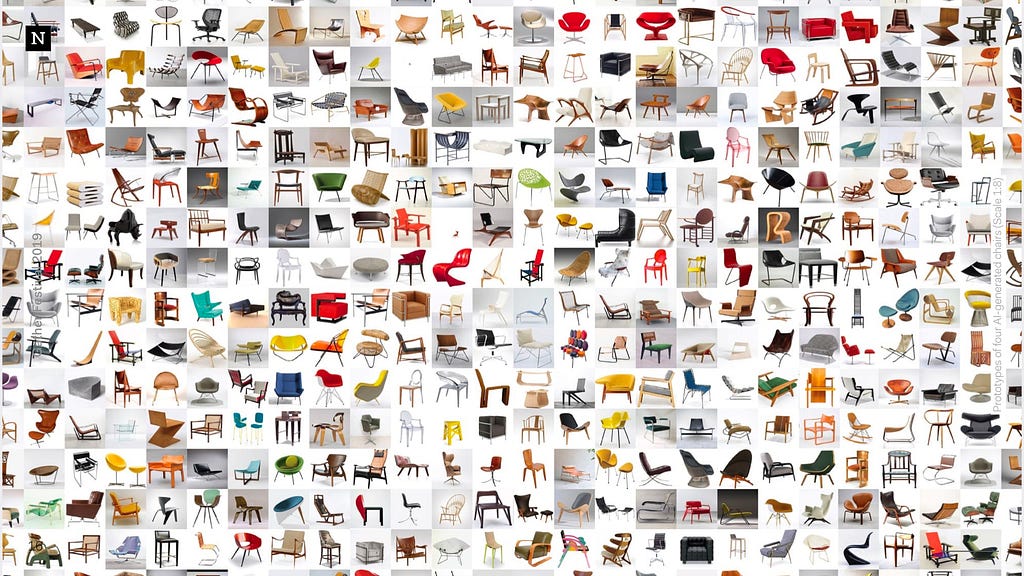
Based on vast quantities of visual data combined with human training, the network slowly starts dreaming its own versions of “chairs” as low-resolution approximations based on what it sees in the data.
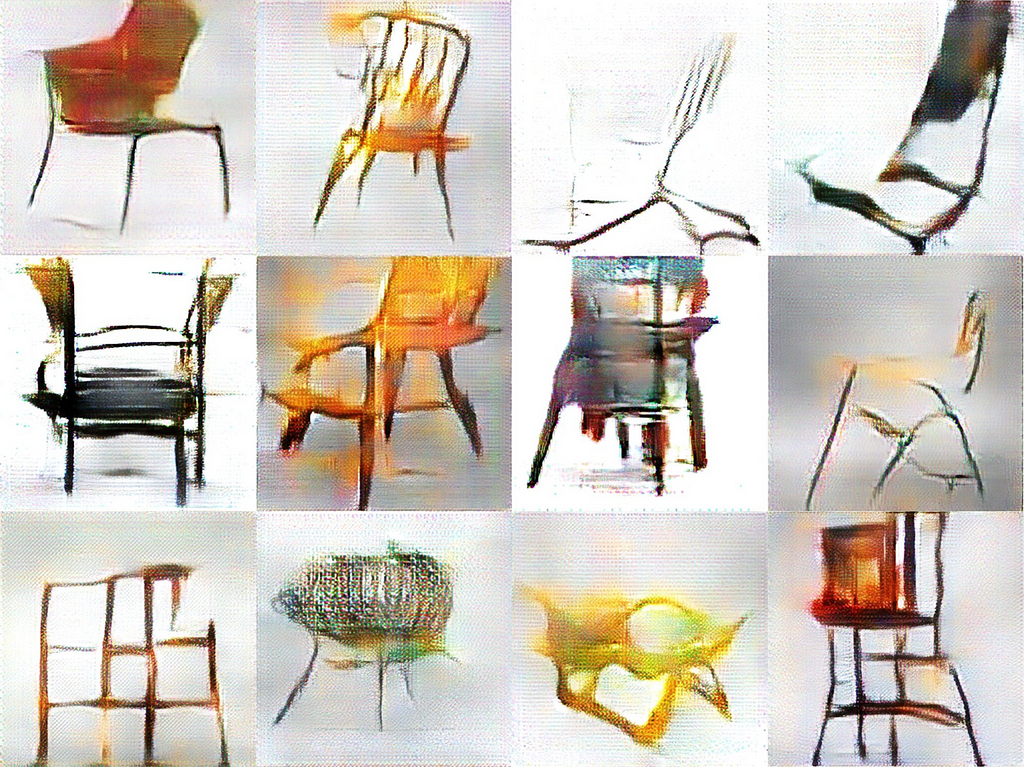
This is where our argument gets interesting. Are these chairs real, fake or something in between? Can a network dream a chair without knowing the complex semantics and human factors surrounding the concept of a chair? What would it take to teach an algorithm functionality and ergonomics as a concept?
In Philipp Schmidtt’s case, the first chairs were still somewhat sketches in physical form: scale models of the most exciting network hallucinations curated to existence by a human being. Something we’d call a real fake again — an experiment to make a chair without the intention of realness or the burden of genuinity.
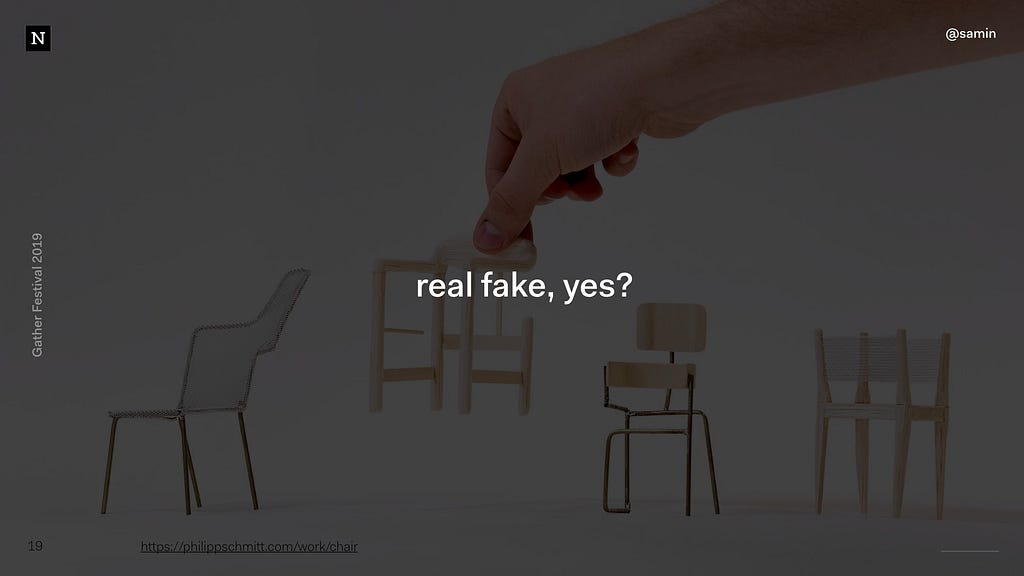
Let’s continue on the thread of physical products, but from a somewhat different angle: China.
Xiaomi is a Chinese electronics company founded by in 2010, as a sort of Chinese answer to Apple’s dominance in consumer electronics. Less than a decade later, they are the world’s 4th most valuable technology start-up valued more than US$46 bn, and the youngest company on the Fortune 500 list.
In Europe and Nordics, they are most probably best known for their MI line of smartphones or the M685 scooter used by mobility startups such as Bird.
In China, they also make smartphones, mobile apps, laptops, bags, home appliances, trimmers, razors, electric toothbrushes, earphones, MI Television, Shoes, fitness bands, and many other products.
All of these are sold in their 1000 Mi Home stores all over China. All of them are packaged in a way that may seem eerily familiar for us westerners — a minimal white box with the product inside pictured clearly on top.
This here is a semi-automatic Xiaomi umbrella I bought from Beijing last year.
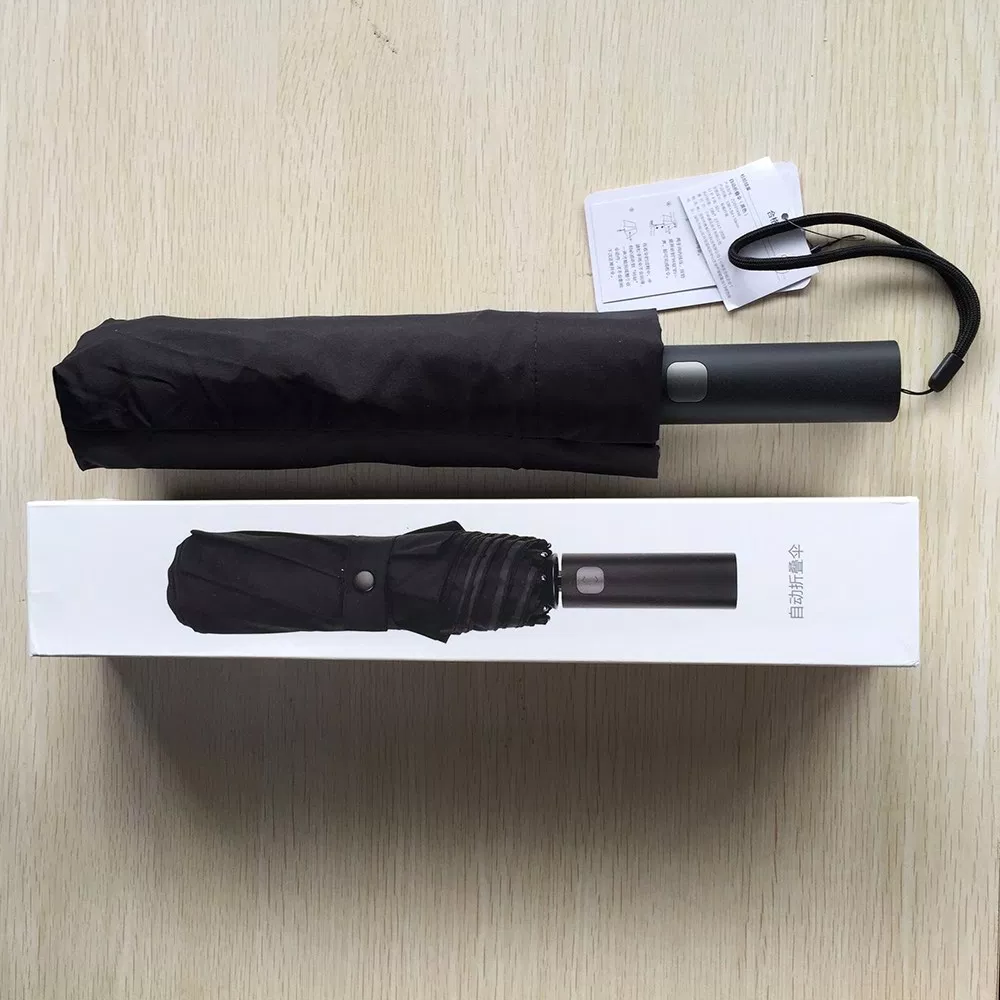
If you’ve ever visited China, this is the new normal there. So many products shared bikes and brand stores that are growth-hacked on the fly with the various strains of future unfolding right at the front of our eyes.
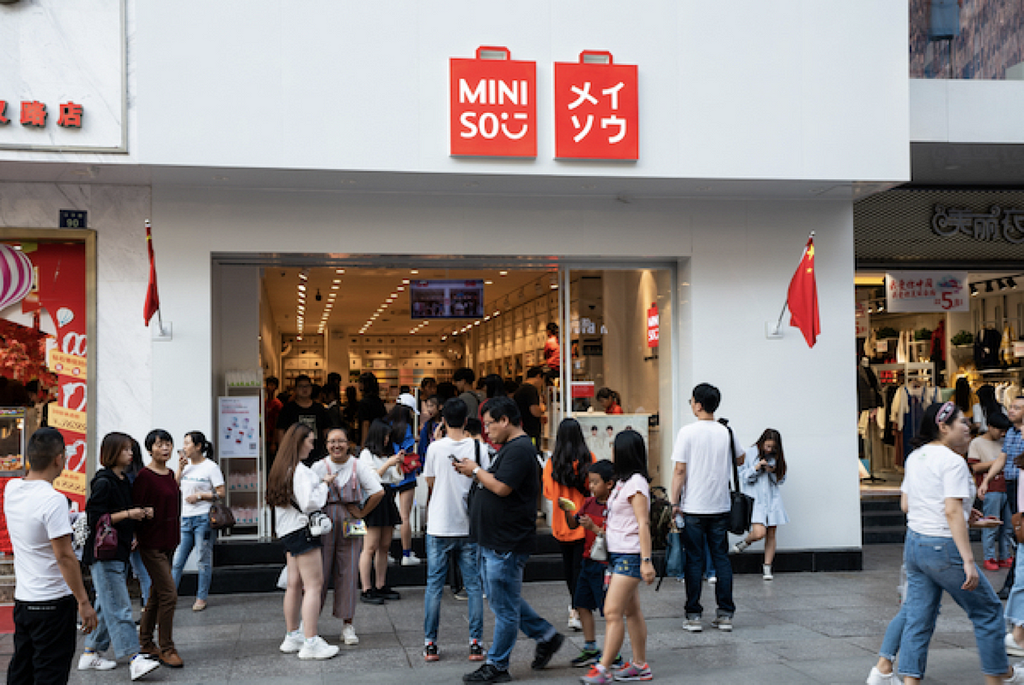
One particular instance of real fake reality we found after wondering Shenzhen’s electronics markets — a phenomenon and study in realities by itself.

Nome is a “Swedish Independent Designer Store”, present quite dominant on high traffic places such as COCO Park mall in Shenzhen and Futian station, the entrance point to the bullet train taking you to Hong Kong 15 minutes away.
Their branding is somewhat a mixture of Nordic minimalism, appropriated for the Chinese market. The brand is quite hilariously distilled into their slogan “Explore new life” — tailormade ethos for the rising Chinese middle class exploring consumerism and Ikea lifestyles.

Let’s take a closer look at what’s going on here. Nome sells its products — as you would — by the faces of the designers.
The thing here is, no-one of these designers are real. These people do not exist.
“Anders Svensson” and “Hannah Gustavsson” are names I would come up too if I had to make up some random Swedish names.
The products Nome sells are triangulated somewhere in between of a pastel-coloured MUJI, IKEA and the countless no-name products present in Shenzhen’s Huqiangbei market not that far away.

Take the Ultraljud doftspridare for example, something akin to MUJI’s aroma diffuser that’s been selling very well in Europe recently. For some reason, Nome even lists their prices in Yen despite the products are sold in China. Some other products like their headphones, were quite literally straight from the Huqiangbei market top floors, with just the Chinese no-name brand changed to …Nome.
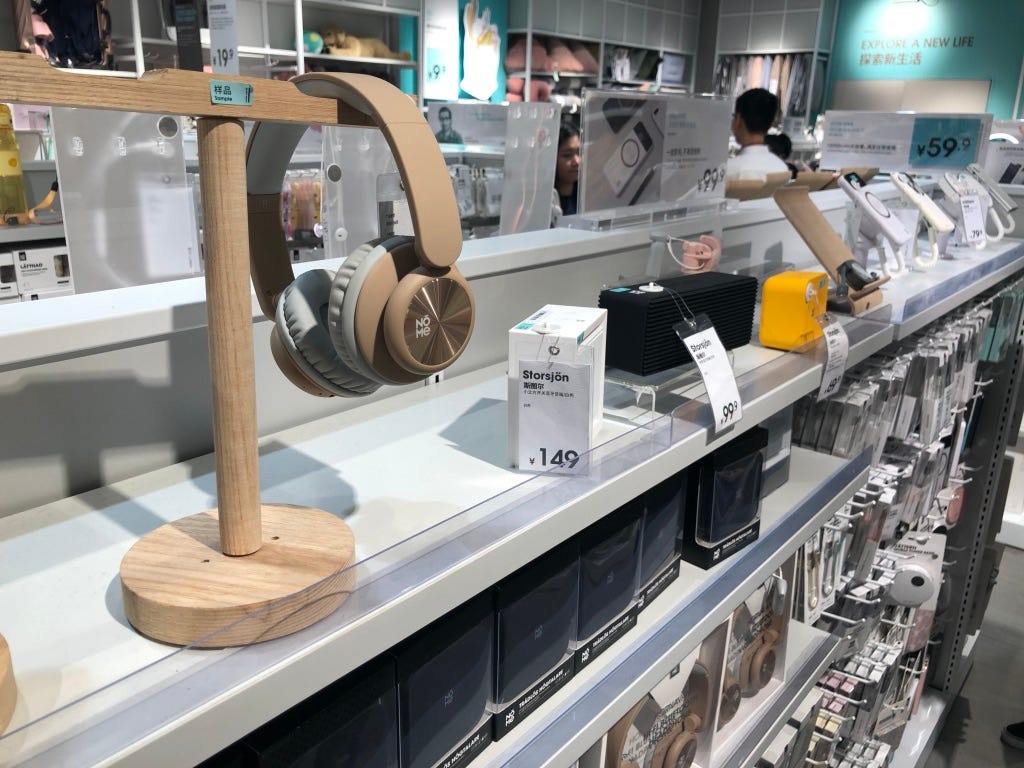
I don’t know. Even I am confused now.

In any case, Nome is a company that is very real. They have even received USD 145 million in funding in three rounds, with Sequoia Capital China being one of their first lead investors.
The ethics of this are entirely another wormhole which I won’t dive here. But let’s say the similar use of rising middle-class aspirations as a beacon of hope for a better future through production line materialism got the western world to where we are right now. Someone did made a lot money along the way, but that lifestyle is also bringing destruction to our civilisation as I type.
(at Gather, I asked if anyone in the audience knew about this, or any background thereof. One hand raised, and we had a discussion afterwards. Now I know, too.
I won’t go into details, but this is a wonderful and a slightly scary story of luck and Swedish entrepreneurialism willing to sell anything, combined with the opportunism, speed and scale of Chinese capitalism.)

In 1980 U.C. Berkeley philosopher John Searle introduced an argument called The Chinese Room argument. The point of it is to “show conclusively that it is impossible for digital computers to understand language or think, and later in especially in the context of Strong AI”. He argued that while it is impossible to fully see inside an algorithm, and it may very well be possible that the room we think is an intelligent computer translating Chinese texts for us is in fact, just a man armed with instructions and dictionaries.
The point is, what is real and what is not is blurring. And which one is which, we don’t always quite know.
In late 2018, I collaborated with a friend of mine, Simone Rebaudengo on combining network generation, machine learning, Nordic design and physical products. The result, Made in Machina/e, is a series of objects made by the network, curated and designed by humans, and manufactured by machines.
For the project, we started from the idea that when it comes to consumer electronics, the Chinese market is essentially a self-driving mechanism. It is almost self-driving industrial market complex, iterating and producing everything the market wants, one way or another. Everyone copies and adapts all the time, so the marketplaces like Aliexpress and Taobao are full of these approximations of physical products dreamed up by humans, and produced on-demand at Chinese factories.
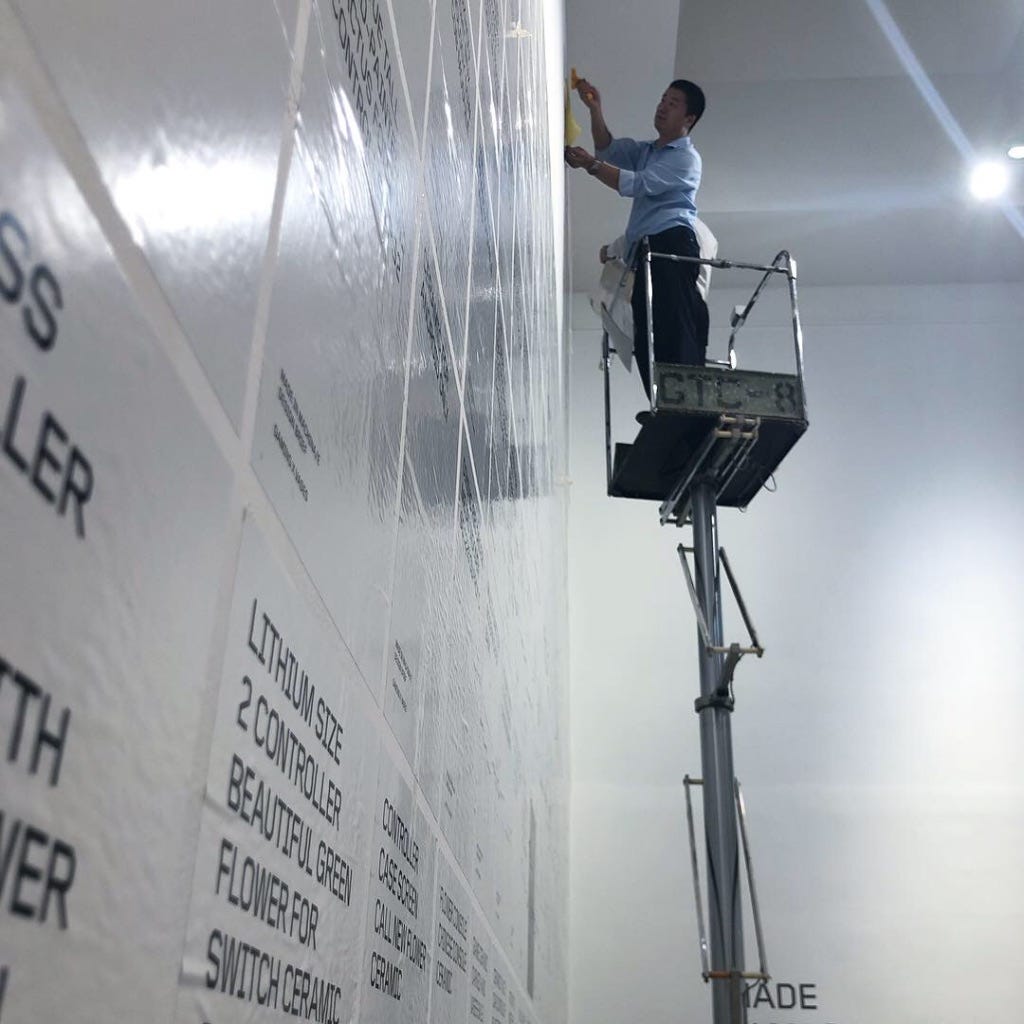
To get started, we scraped thousands of products from a few select categories on Taobao to understand what components were out there in mass, and to use as training material. These were then mixed with descriptions and categories of Nordic design products. After this we trained a recursive neural network (RNN) to write us design briefs based on the model we created.
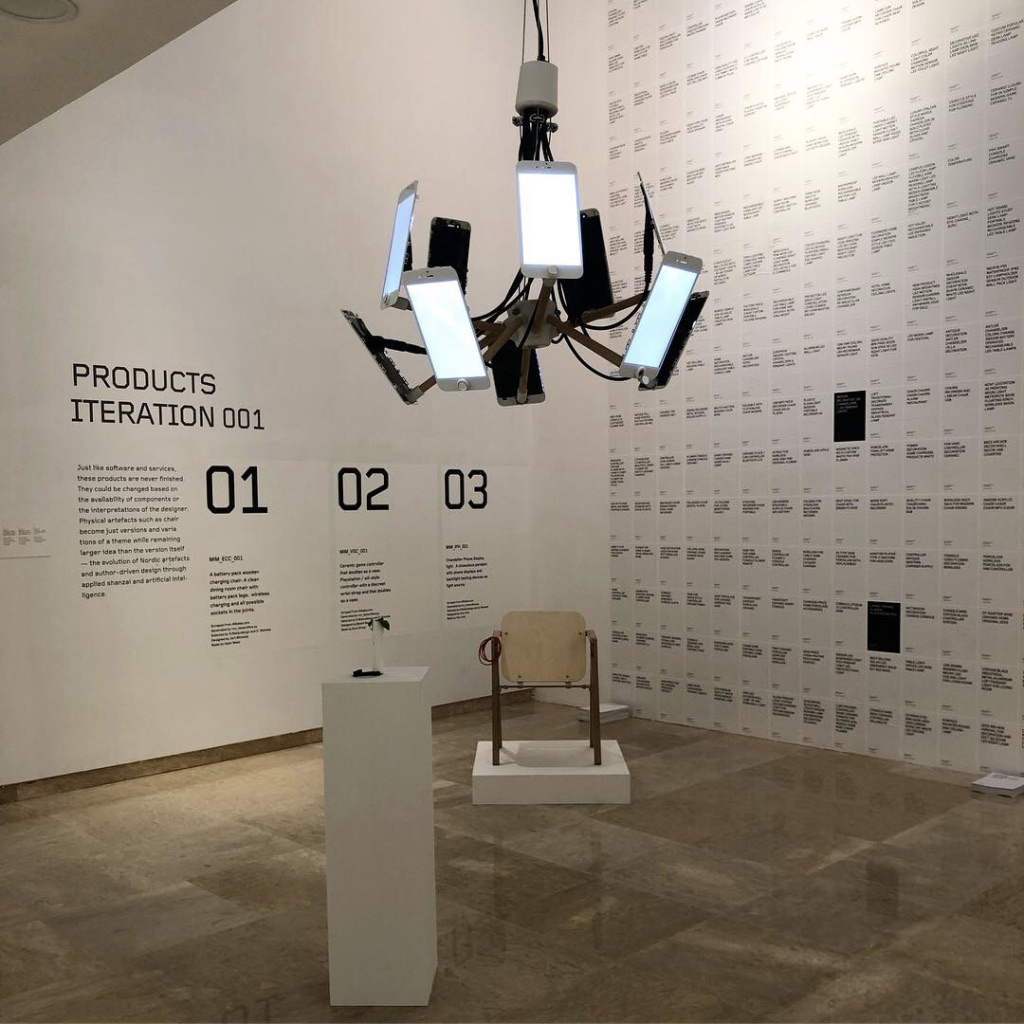
After several training rounds, we handpicked the most interesting ones and expanded them into actual design briefs, which were again given out to three industrial / product designers to interpret. The final three products were manufactured on demand in Shenzen and Shanghai, China before being exhibited in late 2018 in Shenzhen at the He Xiangning Art Museum.
So in a sense, real becomes fake and the other way around.
To paraphrase Arthur C. Clarke, any sufficiently advanced fake is indistinguishable from reality. And that *might* be ok.
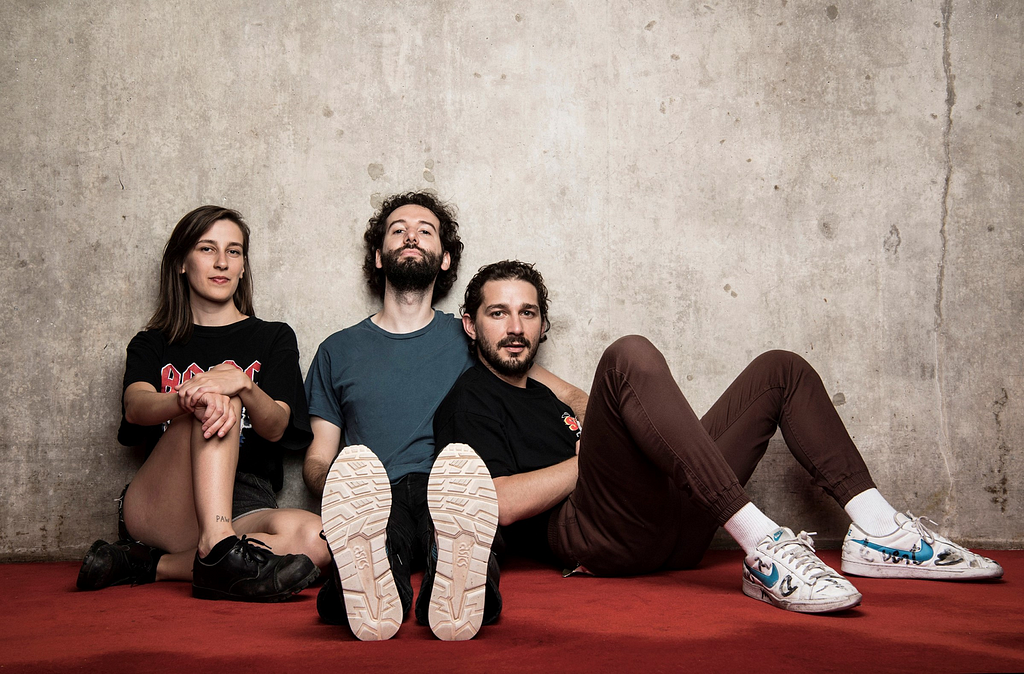
I am a big fan of the collective LaBeouf, Rönkkö & Turner, consisting of American actor and artist Shia LaBeouf, Finnish artist Nastja Säde Rönkkö, and British artist Luke Turner. Their work revolves around the idea of metamodernism, blurring the lines of what is real, what is fake, sincere and a joke. Building on memetic culture, their pieces were largely responsive of yellow press headlines where Shia LaBeouf does odd things and seemingly is losing his mind. Their portfolio includes pieces like #allmymovies, which was a livestream of LaBeouf sitting in a movie theatre, alone, watching all his films in reverse chronological order.
Pieces like these are great because they force us to think about what we see and hear with a grain of salt, and maybe the intentions and effects behind thereof.
The internet is memetic by nature, and we don’t necessarily need a machine learning algorithm expertise to make something that blurs the border between realities and degrees of fake. Deepfakes are just a few degrees from a bunch of guys and a late night with a green screen.
Coming back to machine learning and artificial intelligence, the concept of a latent space is quite interesting

A latent space is a concept in neural networks that allows us to explore the space and representation in between two states. For example, two chairs. In pixel-based or physical words, it’s for one very difficult to articulate the space between two different objects, unless you are into motion graphics and shape tweens of course. They are static, physical beings with their own character, attributes and perception.
The difference is that a latent space in neural networks is not necessarily binary. Instead, and depending on computational power at hand it lets us explore various vectors in between several objects — tens, or hundreds even.

Let’s take Eames as an example. What is the latent space in-between of all the furniture Eames ever produced?
What is the median Eames?

What would be the latent space in between Charles Eames and Mies van der Rohe? Or a transparent Aalto glass vase and a while plastic DAR chair by Eames? Neural networks and machine learning lets us explore all of this.
All of a sudden, we have a gigantic, algorithmic power tool as a paintbrush.
We’re all alchemists again. Like my friend Simone says, we are using software as a looking glass right into the heart of the network, and picking up the most interesting pieces to use, and play around with.
The opportunities are almost limitless. For example, 99,9% of physical product design is inspired by nature, and it’s materials. What if we could replace it with something far more obscure and conceptual, like computers?
The new golden age of creativity is upon us, friends. Let’s play.

Coming back to the original argument of what is real and what is not, that’s not quite all of it. It might as well be, the definitions as such do not matter for long anymore.
In any case, based on what we know from systems theory and Cynefin, we are aware there are several degrees of what is known and unknown in the world, and we must possess the tools and frameworks to deal with all of them. Whenever things seem simple, precise and fit into a checklist, you’re bound for a ride when the underlying complexity rears its head.
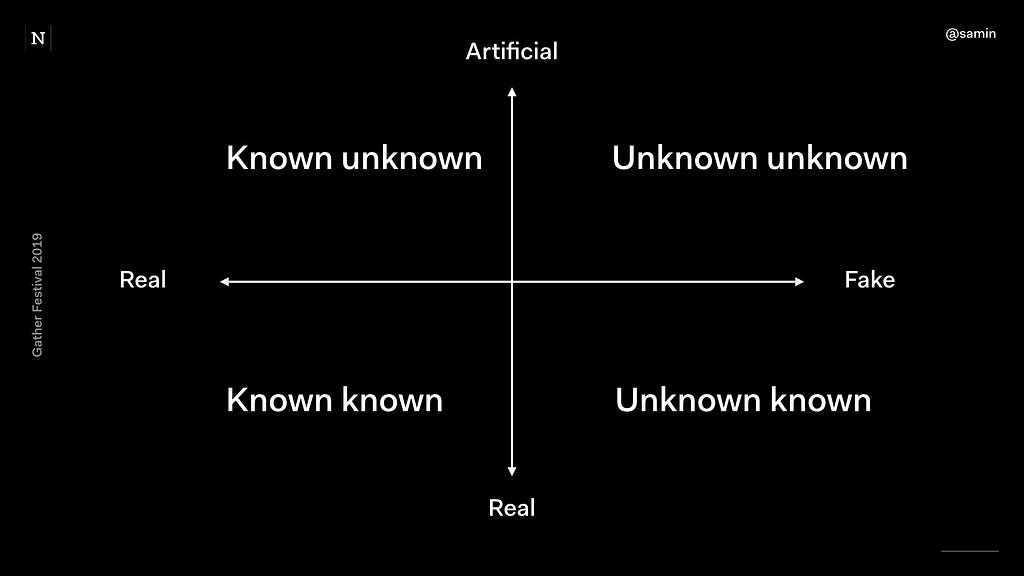
We must tread the thin line between experimentation, technology and media literacy with care. Based on what we understand from metamodernism and memetic culture, everything we say and do can be either taken for face value by someone else, or used against us as disinformation.
Us, designers and technologists have a massive responsibility here to tread carefully, and slow enough to not break things up any more.
Building utopias is a dangerous habit. Dreaming up better worlds is a necessity, but claiming them as a singular goal can be lethal — no utopia is ever complete and wholly inclusive.
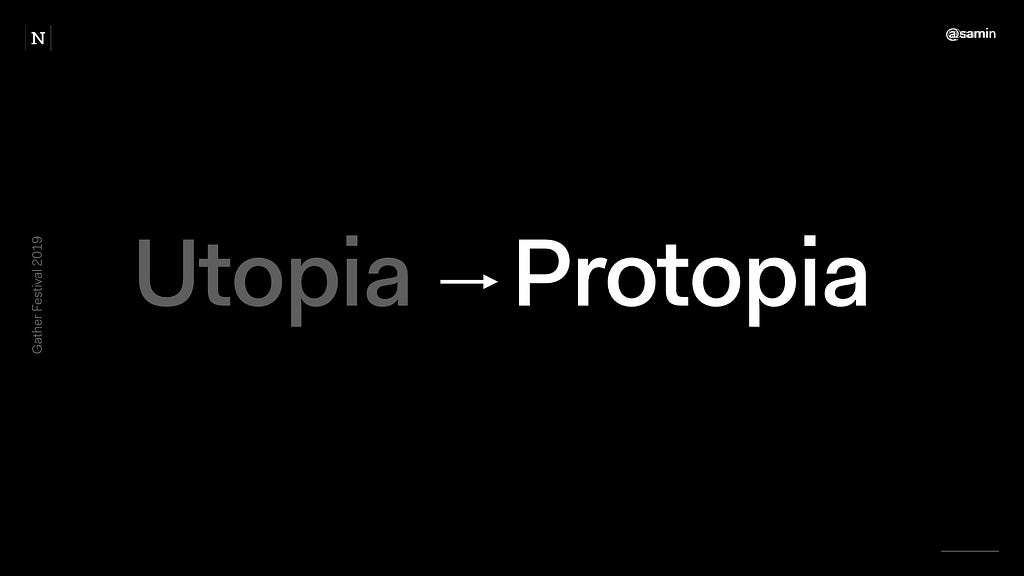
Instead, I am a big fan of the concept of a protopia. Originally coined in 2011 by the Kevin Kelly, the idea of it is to aim for “a state that is better than today than yesterday, although it might be only a little better. Protopia is much much harder to visualise. Because a protopia contains as many new problems as new benefits, this complex interaction of working and broken is very hard to predict.”
Everything we make and solve reveals a gamut of new complex problems for the people and society at large. Approach them with an open mind and curiosity, one at a time, and design safe to fail experiments every single day.
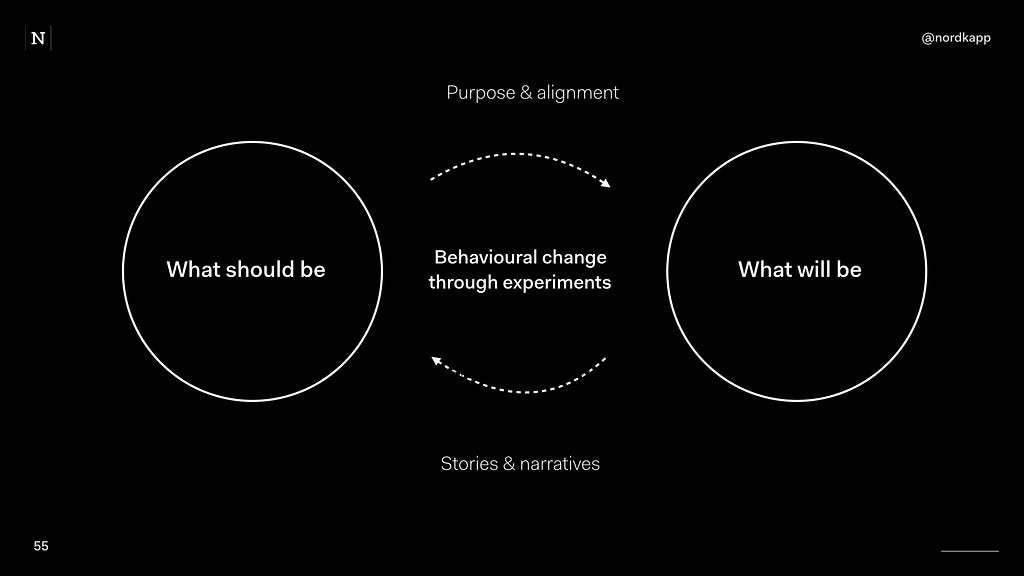
The way we approach this at Nordkapp is to test our ideas to probes and behavioural experiments.
In the modern environment, the current and future products, services and culture are a sum of everything that actually goes on inside an organisation that made them. We believe that true innovations happen through constant validation. Experiments are a continuous process, and the goal is to run structured rapid experiments to understand what works, and what doesn’t.
Quite simple, but requires perseverance over time. Let’s get to it.
— —
We are Nordkapp, a strategic design and innovation consultancy. With our clients, we discover new, meaningful growth opportunities in future trends and technology. It’s what we call futures thinking, doing and learning.
Figuring out new technologies and their consequences is a big part of what we do.
Are you interested in learning more about how to support forward-looking strategies and transformation with design coaching? Talk to Virpi Vaittinen, who leads our Foresight and Strategy Direction -offering at virpi@nordkapp.fi or +358 40 736 7384
If you’d like to shape your business through experiences that bring meaning to your customers, get in touch with Ari Heinonen, our VP, Growth and Business Development at ari@nordkapp.fi or +358 50 386 6348
For learning more about how to support forward-looking strategies and transformation in your organisation, talk to me at sami@nordkapp.fi and +358 50 528 9265
And last, if you’re interested about design in China at large, here’s a talk I gave at IxDA Oslo last winter:
https://medium.com/media/d01909b331a044aed92f9b577e61c072/href
Known unknowns, and realities as design material was originally published in Future is Present Tense on Medium, where people are continuing the conversation by highlighting and responding to this story.